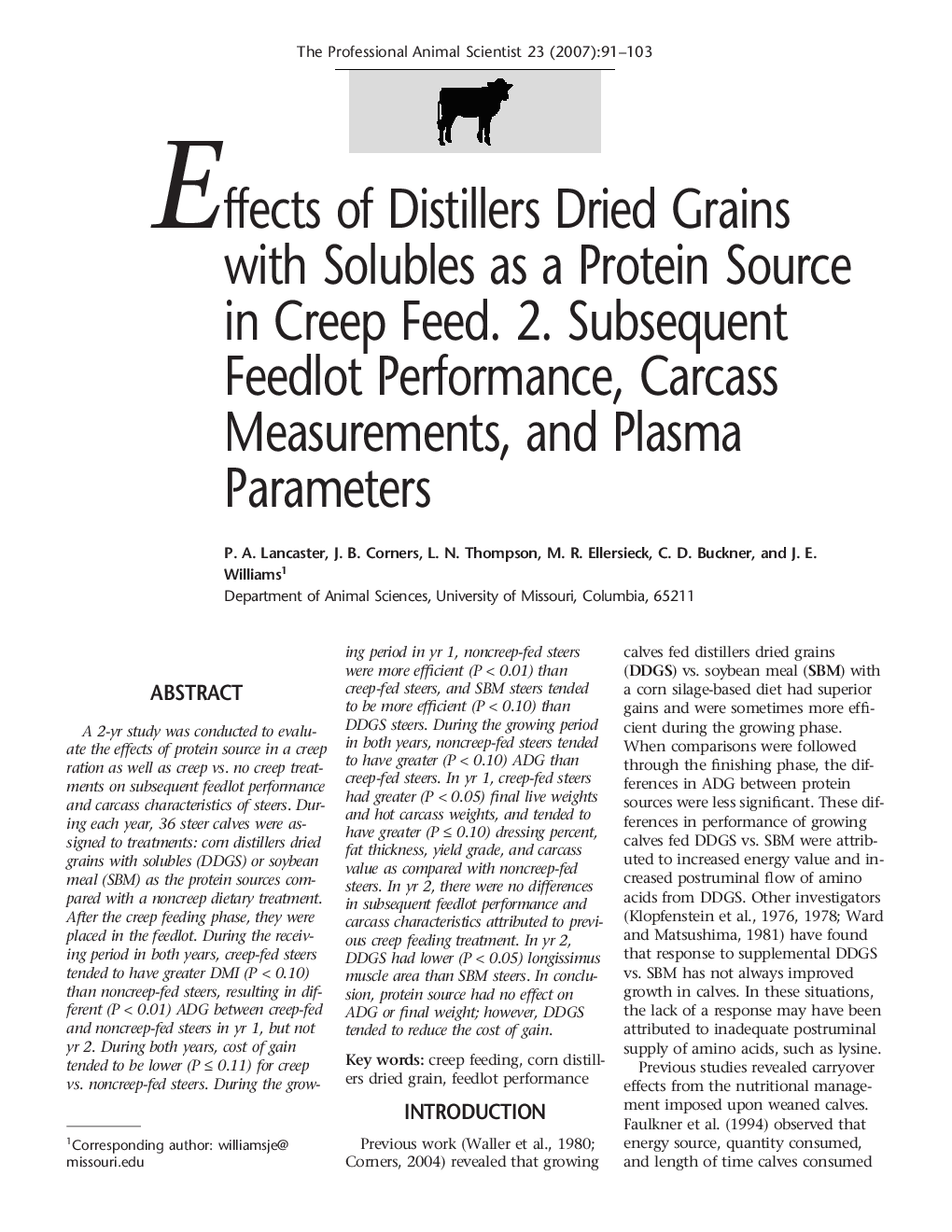| Article ID | Journal | Published Year | Pages | File Type |
|---|---|---|---|---|
| 2454648 | The Professional Animal Scientist | 2007 | 13 Pages |
Abstract
A 2-yr study was conducted to evaluate the effects of protein source in a creep ration as well as creep vs. no creep treatments on subsequent feedlot performance and carcass characteristics of steers. During each year, 36 steer calves were assigned to treatments: corn distillers dried grains with solubles (DDGS) or soybeanmeal (SBM) as the protein sources compared with a noncreep dietary treatment. After the creep feeding phase, they were placed in the feedlot. During the receiving period in both years, creep-fed steers tended to have greater DMI (P < 0.10) than noncreep-fed steers, resulting in different (P < 0.01) ADG between creep-fed and noncreep-fed steers in yr 1, but not yr 2. During both years, cost of gain tended to be lower (P ⤠0.11) for creep vs. noncreep-fed steers. During the grow-ing period in yr 1, noncreep-fed steers were more efficient (P < 0.01) than creep-fed steers, and SBM steers tended to be more efficient (P < 0.10) than DDGS steers. During the growing period in both years, noncreep-fed steers tended to have greater (P < 0.10) ADG than creep-fed steers. In yr 1, creep-fed steers had greater (P < 0.05) final live weights and hot carcass weights, and tended to have greater (P ⤠0.10) dressing percent, fat thickness, yield grade, and carcass value as compared with noncreep-fed steers. In yr 2, there were no differences in subsequent feedlot performance and carcass characteristics attributed to previous creep feeding treatment. In yr 2, DDGS had lower (P < 0.05) longissimus muscle area than SBM steers. In conclusion, protein source had no effect on ADG or final weight; however, DDGS tended to reduce the cost of gain.
Keywords
Related Topics
Life Sciences
Agricultural and Biological Sciences
Animal Science and Zoology
Authors
P.A. Lancaster, J.B. Corners, L.N. Thompson, M.R. Ellersieck, C.D. Buckner, J.E. Williams,
